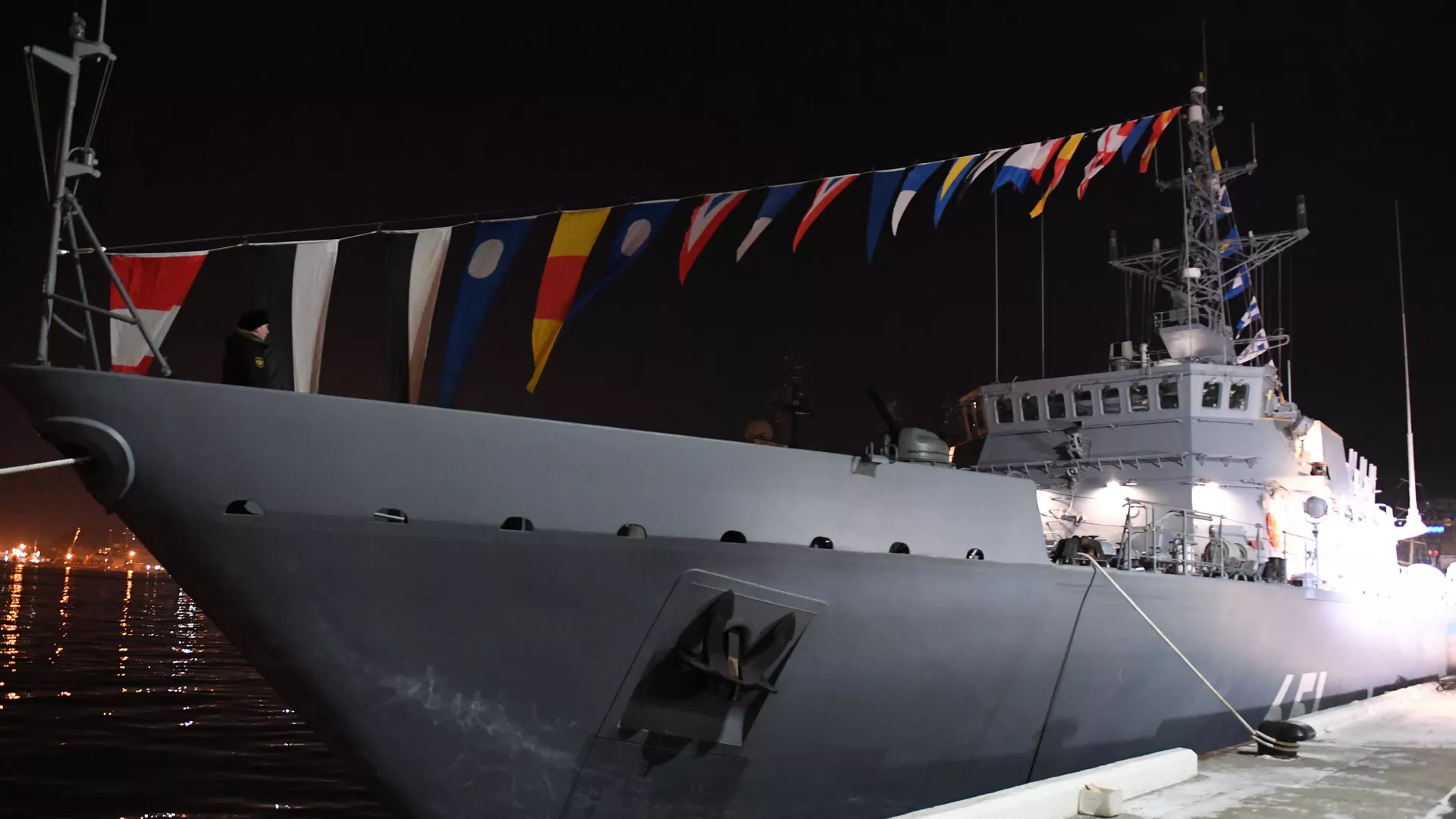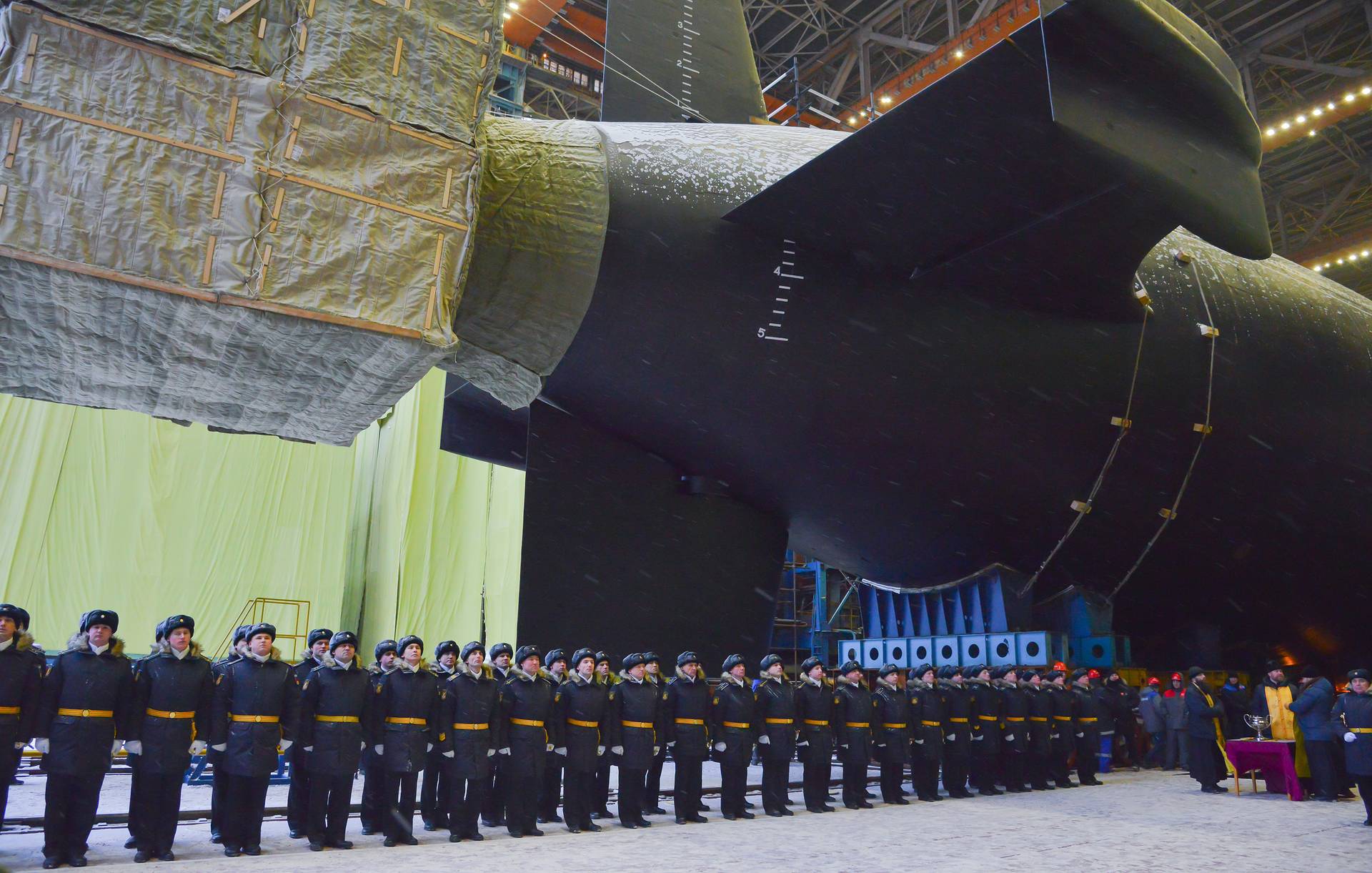Russian President Vladimir Putin stated at a naval commissioning ceremony on December 29 that Russia’s latest nuclear-powered missile cruisers have no counterparts anywhere else in the world.
Regarding the Sevmash Shipyard and Rubin Design Bureau’s contributions to the production of the nation’s nuclear submarines, Putin stated that “the latest nuclear-powered missile carriers being designed and built there have no analogs in the world in many characteristics.”
He stated the vessels have advanced underwater acoustics, navigation, and communication systems in addition to high-precision weapons and robotic systems.
The flag hoisting signifies that the ships have been accepted into the Russian Navy. Defense Sergey Shoigu announced at the end of the ceremony that “the ships have been accepted into the Navy.”
The President of Russia also thanked the designers, engineers, and employees of the Sevmash, Zelenodolsk, and Sredne-Nevsky shipyards for their diligent work and timely, high-quality completion of duties.

A corvette, a minesweeper, and the Generalissimus Suvorov nuclear submarine were among the newly commissioned vessels. The submarine, armed with Bulava nuclear-tipped intercontinental ballistic missiles, is the sixth of the new Borei-class submarines to enter the Russian fleet.
“It will ensure Russia’s security decades ahead,” Putin said. During the ceremony on Thursday, another submarine of the same design, Emperor Alexander III, was launched. The Navy intends to commission it after the completion of trials. All three newly commissioned vessels are valuable additions to the Russian Navy’s armament.
The Generalissimus Suvorov is the sixth Borei-A class nuclear-powered submarine capable of carrying strategic missiles. Each submarine is armed with 16 intercontinental ballistic missiles. Generalissimus Suvorov is assigned to the Pacific Fleet. The sea trials of a seventh Borei-A submarine (the Imperator Alexander III) are scheduled for June next year.
The Grad small missile ship is the tenth in a line of twelve Buyan-M ships. These vessels demonstrated their efficiency in Ukraine’s special military operations and combat missions in Syria.
The Grad has been assigned to the Baltic Fleet. It is outfitted with the most advanced missile and artillery systems and anti-sabotage, anti-aircraft, and radio-electronic equipment.
The minesweeper Anatoly Shlemov, received by the Pacific Fleet, is part of a new generation of anti-mine defense ships. It is project 12700’s eighth minesweeper.
The vessel received its name after Vice-Admiral Anatoly Shlemov, who worked in the Navy’s Main Directorate of Shipbuilding before becoming the State Defense Order Department director at the United Shipbuilding Corporation (USC).
Ten more ships in this class are expected to be delivered in the medium term. They stand out due to their modern anti-mine technology, excellent maneuverability, and fiberglass bodies imperceptible to sea mines’ magnetic fuses.
This ship is significantly lighter and stronger than a steel ship. Its hull’s lifespan is unlimited due to its corrosion resistance.
Four More Nuclear Submarines In Near Future
Putin also revealed that Moscow would soon begin the construction of four new nuclear submarines. “I note that within the framework of the current state armament program, four more such submarines will be built. Which will ensure the security of Russia for decades to come,” he said.
The President emphasized that Russia would speed up and increase the volume of warships it builds, arm them with the latest weapons, and prepare its sailors for operational and combat situations while considering lessons learned, particularly from the special operation.

Putin said that Russia must take all necessary steps to safeguard the country’s security and maritime interests.
Meanwhile, Dmitry Belik, a State Duma deputy from Sevastopol, said that deploying additional ships armed with guided missiles will enhance Russia’s nuclear triad. According to him, if Russia possesses more vessels with guided missile armaments, its enemies will have less desire to breach Russian borders.
Belik highlighted that hiding from a missile that strikes the target precisely, as demonstrated by the actions in Ukraine, is extremely difficult, if not impossible, regardless of how much the West supplies its anti-aircraft missile defenses.
- Contact the author at ashishmichel(at)gmail.com
- Follow EurAsian Times on Google News




